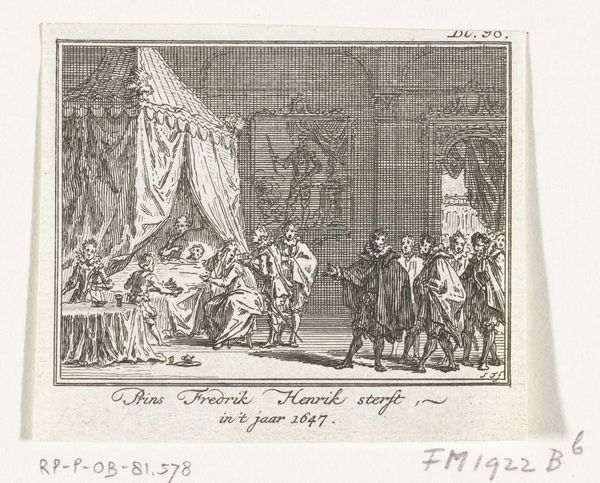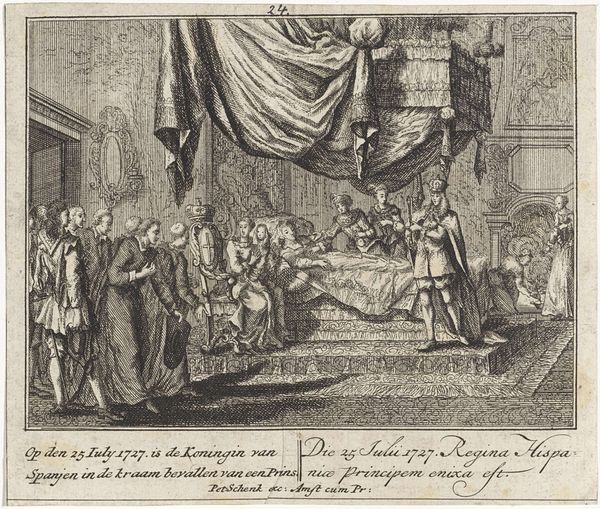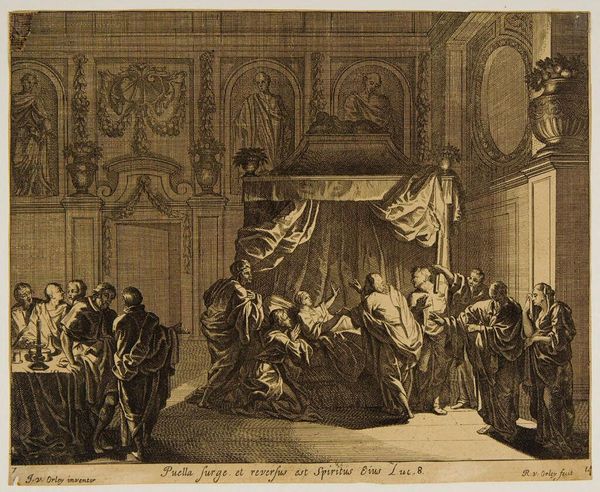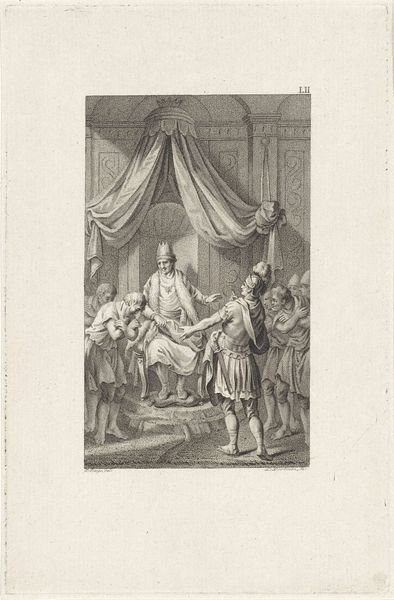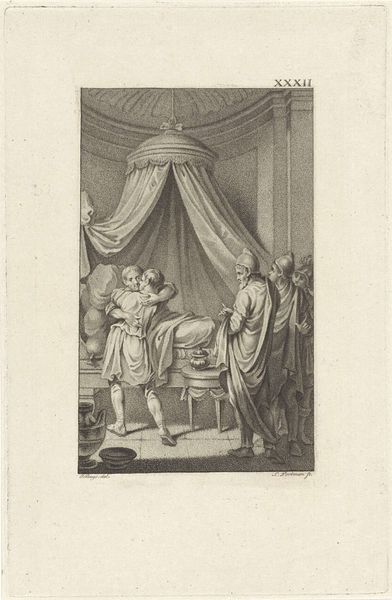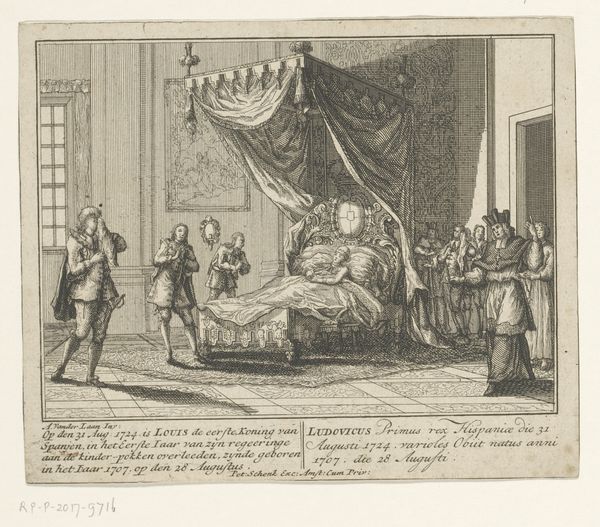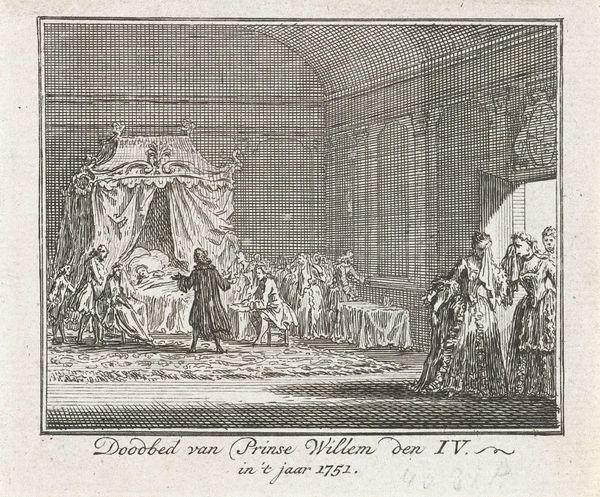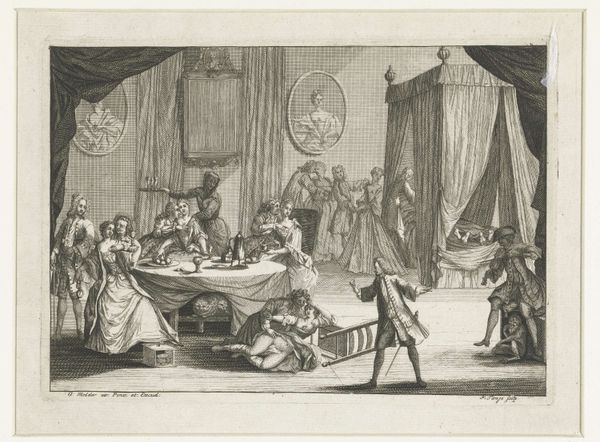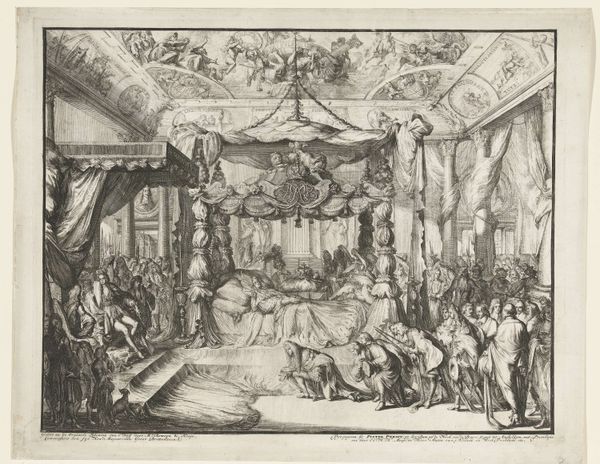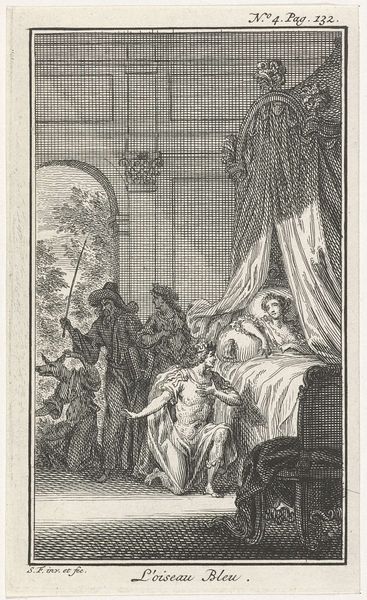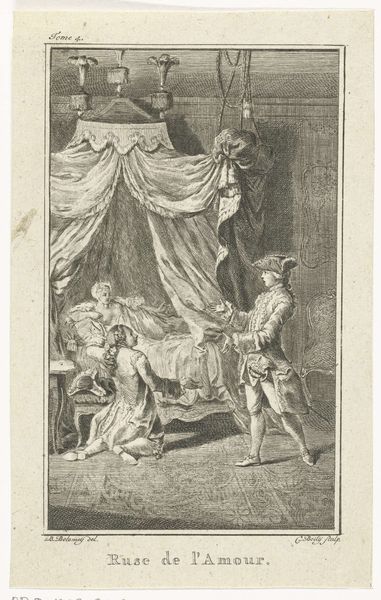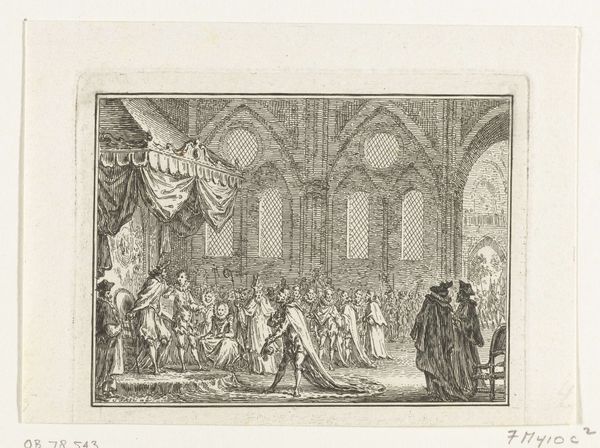
Dimensions: height 83 mm, width 107 mm
Copyright: Rijks Museum: Open Domain
Editor: This is "Sterfbed van Frederik Hendrik, 1647," made between 1782 and 1784 by Simon Fokke. It’s an engraving currently housed in the Rijksmuseum. Looking at this print, the dense, cross-hatched lines creating light and shadow, and it feels incredibly formal and a little melancholic. How do you interpret this work? Curator: As a materialist, I see this print as a product of a specific historical and social context. It's crucial to understand the means of its production. Engraving, a reproductive technology, democratized images, making them accessible to a wider audience. But who truly benefited from this accessibility? Editor: What do you mean? Curator: The process of engraving itself – the labor, the skill required – highlights the socio-economic dimensions of art production. This wasn’t a unique masterpiece; it was created to be circulated, consumed. Who were the intended consumers? And how did the image function within the larger network of power and patronage? Think about the story it tells - the death of a powerful figure, rendered for consumption. Is it celebrating or critiquing? Editor: I hadn't considered the production process so deeply. The "democratization" aspect is interesting – the idea of accessibility versus the actual audience. So, it is as much about labor and its socio-economic factors of printmaking at the time, as about what the scene depicts? Curator: Exactly. This print isn’t just a representation of an event; it’s an object embedded in a web of social and economic relationships. Consider also, the engraver himself and what purpose the final material, the print itself, has and who benefits from the act of creation, both literally and figuratively. Editor: That provides a whole new perspective. Seeing it as an object shaped by these factors opens it up to so much more scrutiny than just what it shows at face value. Thank you! Curator: Absolutely. Material analysis always invites deeper understanding.
Comments
No comments
Be the first to comment and join the conversation on the ultimate creative platform.
